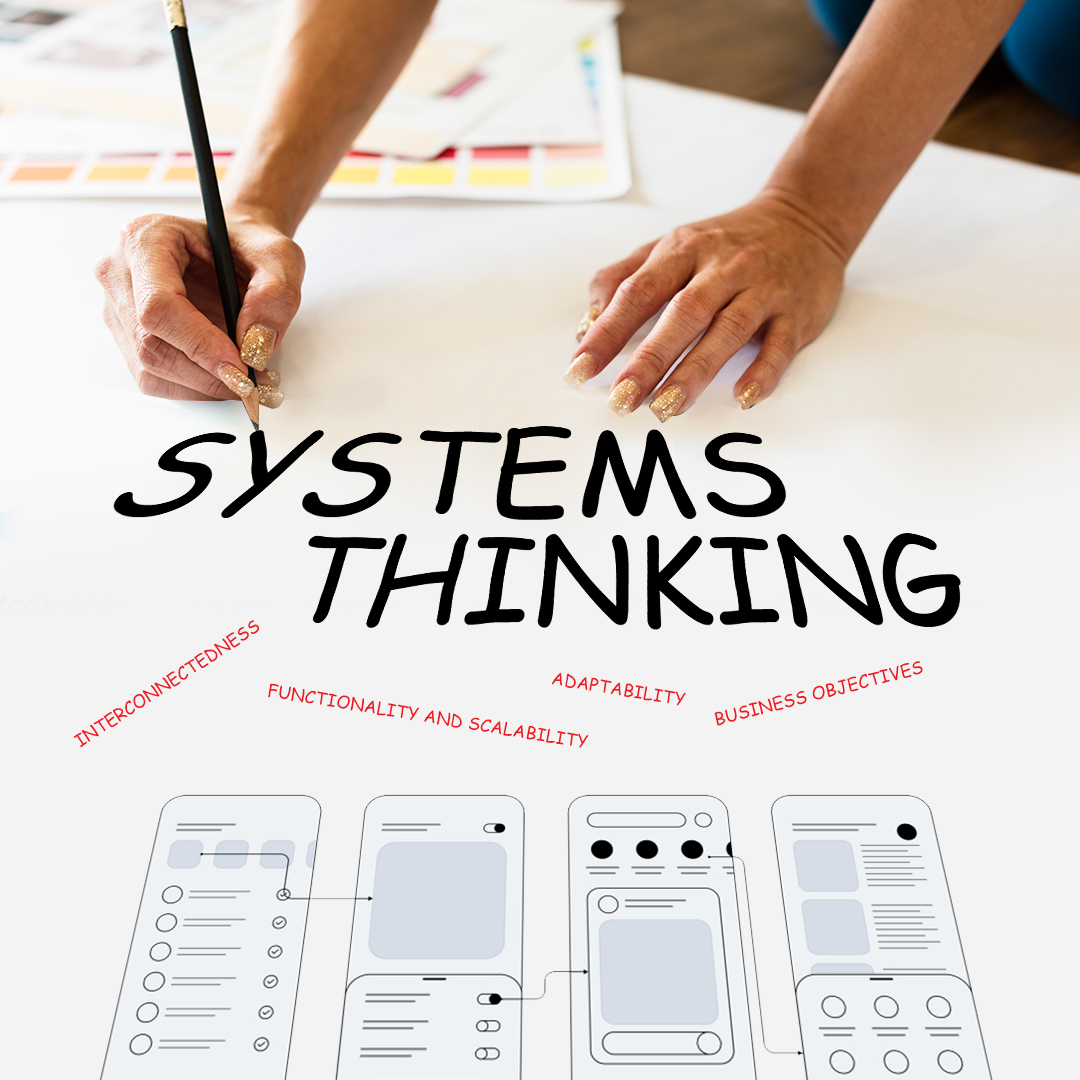Methodologies for Design Strategy: Creating Success for Your Digital Products
A solid design determines the success of every project in the ever-changing field of digital innovation. No matter whether you're creating a website, a mobile app, or a custom software solution, taking the proper approach might be the difference between success and failure. We'll look at strategic design techniques that may be used for any digital project to ensure a disciplined and productive development process.
Design Strategy: Definition
The purpose of strategic UX is to communicate the ideas that influence the design of an organization's offerings and services based on its mission and vision. This strategy and design approach is crucial in closing the gap between the company's goals and the demands of its consumers. As a result, a smart design must define success, define how success will be assessed, and define what separates the organization in terms of competitive advantages.
Design Strategy in Action
UX design strategy enables companies to carve novel routes, elevate consumer experiences, and achieve extraordinary success by blending tactical thinking with user-centric methods. We should look at some intriguing design thinking strategy instances that demonstrate the revolutionary power of this approach.
1. Empowered Goals: The Key to Greater Organizational Performance
Organizations having clear and comprehensible objectives beat their competition because their staff are empowered and engaged in helping them to accomplish them. A realistic brand strategy design takes the edge of the strain of trivial decision-making, which can occasionally stall product development. A strategic design agency accelerates this procedure with its UI UX services team to gain valuable time to evaluate crucial customer concerns or increase overall efficiency. This design strategy consulting, helps them concentrate on personalization, curation algorithms, and resource alignment with strategic goals for leading toward greater user experiences and market impact.
2. High-Impact UX Research to Identify the Correct Challenges
High-impact UX research assists product teams in identifying the appropriate issues and determining the best solutions to those challenges. It can aid in creating effective, efficient, and joyful experiences that drive desired user behavior and achieve commercial benefits.
When you hire developers, three essential initiatives for design strategy in UX must be addressed in order to expand user research and to generate value:
Research framework: Consistent design strategy research approaches and tools that are aligned with a regular product design process
Measuring experience: Tools that consistently generate strategic design and UX metrics to analyze ideas and experience quality
Democratization research: Allowing non-researcher product team members to conduct various sorts of strategic UX research on their own

During the "right problem" phase, focusing on defining and quantifying "the problem" from the outset supports interdisciplinary teams. This will create strong alignment and counter-solution bias via generative and evaluative UX design strategy research.
Using qualitative approaches (such as interviews or user observation) or quantitative methods such as jobs-to-be-done, usability testing, or heuristic evaluations can help figure out the below aspects related to design thinking strategy.
- jobs hired to accomplish products/services goals
- unmet demands of customers and prospects
- how people currently address specific process
- identifying strains in experiences and where to ease it
- why existing workflows/features/pages do not provide intended user behavior and outcomes
3. Bringing Value-Driven Businesses to Life

A design strategy helps a company to precisely identify its target demographic, examine its demands, and discover value-creating solutions. Products based on these insights have a higher market success rate and may be readily improved through subsequent revisions.
In the end, optimum product development necessitates the creation of cost-effective solutions that are supported through strategic design research. Due diligence during the development process serves as a preventive technique, lowering the need for the company to commit time and resources to recovering a failed product.
4. Prioritization
Although organizations frequently claim to be user-oriented, a design team in need of more user attention may invest money in sophisticated features with low value. However, strategic UX directs user-centric companies to focus on features that provide the most value with the least amount of work. This UX design strategy maximizes long-term outcomes for a diverse customer base, for instance, in professional mobile app development. Let's look at two potential design thinking strategy approaches now.
A Holistic Approach to Problem-Solving via Systems Thinking
A design strategy based on systems thinking can be transformational in the field of digital project creation. Systems thinking taken by a strategic design agency is a comprehensive approach that acknowledges the interdependence of project components.
1. Interconnectedness
A design strategy based on systems thinking recognizes that each project aspect has an impact on others. This strategy and design knowledge aids teams in identifying possible bottlenecks, optimizing procedures, and ensuring smooth integration.

2. Functionality and Scalability
A systems-based design strategy in UX assures the functionality and scalability of digital initiatives. This method predicts future requirements and technical improvements, ensuring the project's long-term viability.
3. Adaptability
Change is prepared for via systems thinking in digital initiatives. The design strategy consulting approach directs the project's flexibility as the business landscape evolves, allowing for changes without sacrificing fundamental functionality.
4. Alignment with Business Objectives
The benefit of systems thinking is that it aligns with larger company goals. The smart design approach guarantees that the digital project is consistent with the purpose, vision, and long-term strategy of the company.
Optimizing Landing Pages to Improve User Experience

If a company wants to redesign their website's landing page, the existing page must accomplish its goals, necessitating a brand strategy design overhaul. This is when design strategy enters the picture.
1. Identifying Success
The strategic design approach must provide success measures, such as what results are sought and for whom. It can be more user engagement, increased revenue, or improved brand recognition. The company then provides a defined path for the project by identifying success metrics.
2. Identification and Rationale of An Issue
The organization should examine the problems with the present landing page and explain why strategic UX modifications are essential. They should know how its redesign will address customer pain concerns while still aligning with the company's goals.
3. Developing the Value Proposition
The UX design strategy approach should highlight the company's unique selling point such as competitive benefits that will be provided by the newly designed landing page. This might include a more user-friendly user interface, easier navigation, or greater integration of the company's goods.
4. Design Principles in Use
The plan should include design concepts that influence the landing page's aesthetic and functional components. Consistency, clarity, and conformity with the company's branding requirements are among these design thinking strategy concepts.
5. Approach Based on Collaboration
Close engagement between the company and its brand strategy design team is critical during the design strategy phase. A thorough grasp of user wants, goals, and pain areas serves as the cornerstone for an effective redesign.
Redefining Identity Through Company Rebranding
Another hard endeavor that necessitates a systematic approach by a strategic design agency is company rebranding. A well-executed rebranding plan, whether motivated by worldwide development, reputation enhancement, or leadership transitions, may reshape a company's destiny.
1. Customer Personas
Delving into client personas — determining the new brand's target audience — is part of the strategy and design approach. This comprehension creates the brand's story and connects with the target audience.

2. The Psychology of Color
Color choosing is not done by chance but a design strategy in UX. A design plan takes into account the psychological influence of colors. Red is associated with energy and passion, whereas blue is associated with trust and calm. The colors used are appropriate for the brand's desired message.
3. Goals for Rebranding and Competitor Analysis
It is critical to define rebranding objectives clearly with design strategy consulting. A good design plan explains why the company has to rebrand and how it will position itself. Analyzing competitors ensures uniqueness and innovation.
4. Handling Collateral
Rebranding is more than just a new logo. Smart design strategy includes collateral damage control, which includes upgrading everything from advertisements to stationery. The new identity is reinforced by a consistent brand presentation.
The Strategic Wrap-Up
Design strategy is an evolutionary engine that turns ideas into reality, integrates corporate goals with user demands, and drives enterprises forward. The value of strategic design rests in its ability to match creative genius with strategic intelligence, whether it is utilizing UX research methodologies, optimizing landing pages, going on rebranding initiatives, or adopting systems thinking. Harnessing the potential of design strategy is no longer a choice in today's fast changing world - it's a need for those who want to grow and achieve. Need a helping hand from experts to leverage maximum advantage from design strategy? Call us!


